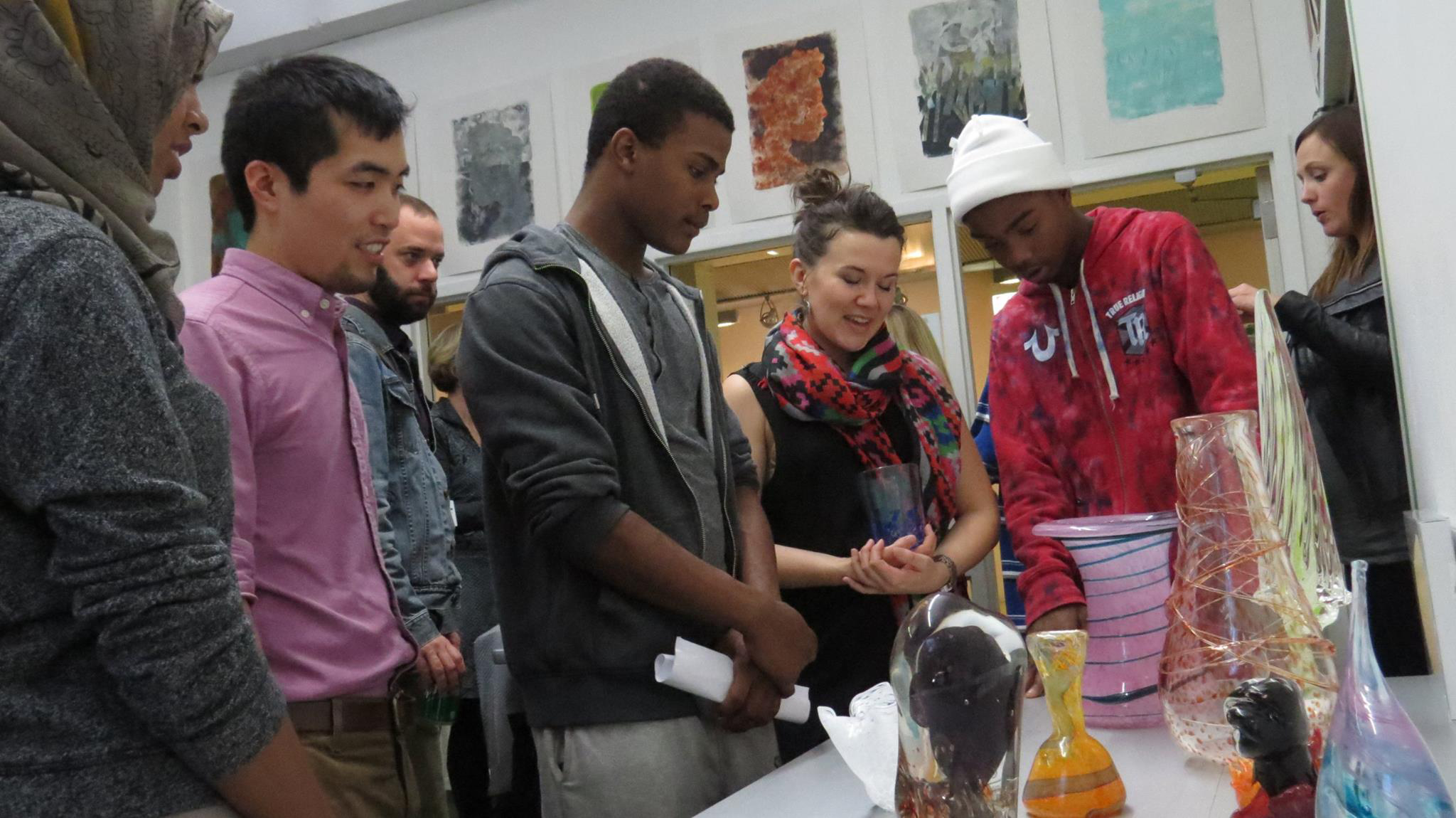Twenty-four hours before the Project FIRE showcase on October 21, psychologist Brad Stolbach, the project’s co-founder, felt excited. His day was peppered with last-minute tasks for the next day’s festivities: reminding himself to buy party plates after work, confirming that all of the glass art would survive the journey to the Hyde Park Art Center, and arranging transportation for the four participants of Project FIRE, a pilot program that gives young survivors of gun violence a space to heal through glassblowing sessions and mentorship.
Despite his excitement, Stolbach said a tinge of sadness loomed over the upcoming celebration: after the showcase, Project FIRE would be over for the foreseeable future. The program, which ran for eight weeks in the summer, created a community in which participants could learn a new art form while having loosely structured conversations about how gun violence has affected their lives. The program—along with the research about its impact—is currently being funded through a year-long faculty fellowship from the University of Chicago’s Urban Health Initiative. Part of these funds went toward paying participants for their work in the glass shop, a component of Project FIRE that is intended to empower participants.
But Stolbach and his co-founder, glassblowing artist Pearl Dick, have yet to secure funding for upcoming years. The two are currently working on building a donor base, as well as applying to grants.
“It’s hard not to be able to tell [the participants] for sure what opportunities there will be in the future,” said Stolbach.
But on the Wednesday evening of the program’s final showcase, few seemed to be dwelling on the uncertainty of the future. Family, friends, doctors from Comer Children’s Hospital, and artists gathered at the Hyde Park Art Center to celebrate the work that the FIREwalkers (as Stolbach refers to them) and their mentors and teachers undertook over the summer. Decorations around the room allowed the community to reminisce—photos of the group’s glassblowing escapades at Ignite Glass Studios were projected onto a white wall, and a small coffin on display served as the resting place for the pieces of glass art that did not survive months of wear and tear.
The event was also an opportunity for supporters to buy some of the pieces that participants had labored over: the dozens of vases, glasses, plates, and figurines that lined the walls and tables were all available for sale, with all proceeds going back to the artists behind the work. Money from collaborative pieces benefited Project FIRE. Most of the pieces were sold within the first half hour of the event, according to Dick. She had to start asking buyers to leave the pieces behind so that latecomers could still get a chance to see the FIREwalkers’ works.
Tawan Langston Jr., one of the FIREwalkers, said he was feeling good about the showcase. His mother, Alicia Burns, bought a small droplet-shaped sculpture that Langston named Goblin Lava.
“It came out the way I pictured,” said Langston of his piece. “I wanted something with crazy, wild colors.”
Working in a glassblowing studio, sometimes known as a hot shop, builds trust and collaboration, many involved with Project FIRE observed.
“With glassblowing, you develop a certain level of bond because of the danger inherent and the level of communication it requires,” said Dick. “You’re never working with just one person.”
Stolbach believes the medium is particularly compelling for people who have experienced trauma because the imminent danger of a 2000-degree furnace forces glassblowers to focus on the present. Despite the therapeutic qualities of glassblowing, the practice is not intended to replace therapy. Instead, Project FIRE frames its programming more as an opportunity for the FIREwalkers to have a job and learn a skill while receiving mentoring and support.
After a few hours of mingling, Dick and Stolbach quieted the room. The crowd turned to face the program staff: mentors N’Kosi Barber and Andrew Neswick and caseworker Artesha Williams stood shoulder to shoulder as Stolbach honored each FIREwalker with a certificate of completion.
Project FIRE “really shows you how much people care about you,” said Langston. “We came together like a family. We just started working together, helping each other.” Barber echoed these sentiments, saying that even after the program ended, he still checks in with his mentees by phone or Facebook.
“They’re like my little brothers,” said Barber.
Both co-founders discovered the social bonds in Project FIRE to be an unexpectedly significant part of the experience. “I knew that some important things would happen in this program, but I’m surprised by how close we’ve all become,” said Dick. Both she and Stolbach think that they will adjust the sessions in the future to allow more time for FIREwalkers to socialize without structured activities.
As guests trickled out, FIREwalkers helped the program staff take down tables and pack the remaining pieces of work in bubble wrap. Langston danced around the room to celebrate his final sale: a vase for fifty-five dollars.
Stolbach’s fellowship does not end until March 2016. Though the groups will no longer meet for four-hour glassblowing and psychoeducation sessions, Stolbach still plans to interview the FIREwalkers—once shortly after the showcase, and then again in a few months—to determine what impact the program has had on these young survivors of gun violence.
Interviews and conclusions aside, loved ones have already felt the program’s effects. Langston’s mother, Alicia Burns, observed how the program had changed her son. “The kids, even though they went through their experiences, this was an outlet to help them release anger, some stress,” said Burns. “I wasn’t sure if he would be that comfortable opening up. But I found that he was able to open up more with the program than he would with me.”



